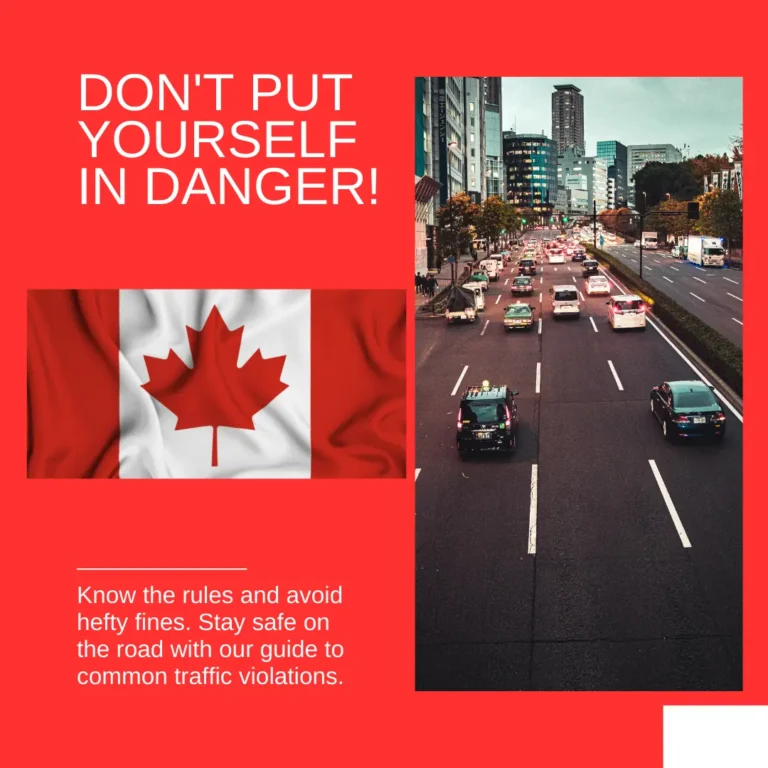Safely Enter and Drive Through a Roundabout
Roundabouts, with their circular design aimed at improving traffic flow and safety, have become increasingly common on roadways. These traffic management structures offer an alternative to traditional intersections, reducing congestion and enhancing efficiency. Navigating a roundabout requires a distinct set of skills to ensure a smooth traffic experience for all users.
In this comprehensive guide, we will delve into the key steps and considerations for safely entering and driving through it. By understanding the nuances of roundabout navigation, drivers can contribute to the overall success of these traffic solutions, fostering a safer and more streamlined road network.
Tip for entering and driving through a roundabout
Here are some tips for drivers to how to enter and drive through a roundabout:
Approaching towards Car
Reduce your speed as you approach the roundabout and be prepared to yield to circulating traffic, ensuring a smooth and safe entry into the circular intersection. The reduction in speed allows for better visibility and reaction time, promoting a controlled approach to it. It’s essential to be vigilant and observe road signs that provide advance notice of the roundabout and guide drivers to the appropriate lanes for their intended exits.
Pay attention to pavement markings, such as arrows and lane designations, which further assist in determining the correct path through the roundabout. These visual cues play a crucial role in establishing a clear and organized traffic flow, enhancing safety for all drivers navigating it.
Yield to Circulating Traffic
Yield to vehicles already in the roundabout, exemplifying a courteous and cooperative approach to traffic management. Patiently wait for a safe gap in the traffic flow before entering it, ensuring seamless integration into the circulating vehicles. Recognize that traffic within the roundabout holds the right of way, emphasizing the importance of yielding to this internal flow.
This principle of yielding promotes a harmonious traffic pattern, reducing the likelihood of congestion and potential conflicts. When waiting for an opportune moment to enter, exercise caution and be prepared to yield to any approaching vehicles, cyclists, or pedestrians within or approaching it. This mindful yield not only contributes to a safer roundabout experience but also fosters an atmosphere of shared responsibility among drivers.
Choose the correct lane
Select the appropriate lane based on your exit strategy to ensure smooth and efficient navigation through the roundabout. If you intend to take the first exit or execute a U-turn, it is advisable to use the inner lane. This lane choice allows for a more direct and efficient maneuver, minimizing disruptions to the traffic flow within it. Conversely, if you plan to take an exit beyond the first, opt for the outer lane.
The outer lane provides a longer and more gradual curve, suitable for drivers traveling through it to subsequent exits. Always adhere to designated arrows and road markings that guide drivers to their respective lanes, reinforcing the importance of a predictable and organized traffic flow. Following these lane-selection guidelines not only enhances safety within the roundabout but also contributes to the overall efficiency of the intersection.
Signal your Intentions
Use your turn signals as a proactive means of communication, fostering a cooperative and predictable traffic environment within it. Activate your right turn signal when approaching and entering it, signaling to drivers behind you that you intend to merge into the circular intersection. This early communication provides clarity to others, allowing them to adjust their speed or lane position accordingly.
Once inside it and approaching your desired exit, signal left. This indicates to surrounding drivers your intention to leave the circular roadway, enabling them to anticipate your movement and make informed decisions. Consistent and clear signaling at each stage of navigating the roundabout is paramount to enhancing predictability among fellow motorists.
Maintain a Consistent Speed
Adherence to lane discipline within this is essential for maintaining a safe and orderly traffic pattern. Once you have entered it and selected the appropriate lane based on your intended exit, avoid changing lanes within the circular intersection. The designated lanes are carefully designed to facilitate a smooth traffic flow, and lane changes within the roundabout can lead to confusion and potential hazards.
Only consider changing lanes if road markings explicitly indicate that it is permitted. Some of them have specific zones where lane changes are allowed, usually marked by dashed lines. In such cases, proceed with caution and ensure that you signal your intention to change lanes, taking into account the presence of other vehicles.
Stay in Your Lane
Staying in your lane within a roundabout is a fundamental rule that contributes to the smooth and safe functioning of this traffic management system. Once you have entered the roundabout and chosen the appropriate lane based on your intended exit, it is imperative to remain within that designated lane until you reach your exit point. Avoid changing lanes within the roundabout, as each lane is strategically designed to guide traffic to specific exits, minimizing the potential for conflicts and collisions.
This adherence to lane discipline ensures a clear and predictable traffic pattern, allowing all drivers to navigate the circular intersection with confidence and ease. By staying in your lane, you contribute to the overall efficiency of the roundabout, promoting a cooperative and organized flow that enhances safety for all motorists sharing the circular roadway.
Watch for pedestrians and cyclists
Maintaining vigilance for pedestrians and cyclists is paramount when navigating a roundabout. Be particularly attentive to crosswalks and designated paths around the circular intersection, as these areas are crucial for the safety of non-motorized road users. Exercise extra caution when approaching marked crossings, ensuring that you yield to pedestrians and cyclists as you would to other vehicles. In a roundabout, pedestrians and cyclists typically have the right of way at marked crossings, and it’s essential to respect and prioritize their safe passage.
Adjust your speed accordingly, especially when entering or exiting the roundabout, and be prepared to come to a complete stop if necessary. By acknowledging and yielding to pedestrians and cyclists, you contribute to a more inclusive and secure traffic environment, fostering a sense of shared responsibility among all road users. Remember, creating a safer roundabout experience involves not only the consideration of fellow drivers but also a heightened awareness of and respect for those who navigate the circular intersection on foot or by bicycle.
Be patient and Courteous
The functionality of roundabouts hinges on the principle of cooperation among drivers. Patience and a willingness to yield the right of way when required are integral components of navigating these circular intersections successfully. Unlike traditional intersections controlled by traffic signals or stop signs, roundabouts rely on a synchronized and cooperative traffic flow. By adopting a patient approach and yielding when necessary, drivers contribute to the overall effectiveness and safety of the roundabout. This cooperative mindset ensures continuous, smooth traffic movement, reducing the likelihood of congestion or disruptions.
Courteous driving in a roundabout involves being attentive to the actions of other drivers, especially during lane changes and exits, and allowing space for merging vehicles. This collective cooperation fosters a safer and more efficient driving experience for everyone using the circular roadway. Ultimately, recognizing and embracing the cooperative nature of roundabouts enhances their effectiveness, promoting a culture of shared responsibility and consideration among motorists.
Exit the roundabout safely
When approaching your exit within the roundabout, signaling left is a critical step to communicate your intention to other drivers and ensure a seamless exit. Activate your left-turn signal in advance of your exit point, providing clear and timely notice to those around you. Simultaneously, check for the presence of pedestrians and cyclists, particularly at marked crossings or designated paths near the exit. Vigilance at this stage is crucial to prioritizing the safety of non-motorized road users.
Exiting the roundabout should be executed smoothly and without abrupt maneuvers. Maintain a consistent speed and yield to any traffic in the next lane, ensuring a safe transition onto the connecting road. Be aware of vehicles entering the roundabout from other lanes, and exercise caution to avoid potential conflicts. By signaling left, checking for vulnerable road users, and yielding appropriately, you contribute to a controlled and secure exit from the roundabout, fostering a safer traffic environment for all.
Remain alert and observant
Staying focused on your surroundings is paramount when navigating roundabouts, and it involves a continual commitment to awareness and adaptability. Given the dynamic nature of traffic within circular intersections, drivers must remain vigilant and be prepared to adapt to changing conditions. This means actively observing the movements of other vehicles, anticipating lane changes, and staying attuned to the signals and actions of fellow motorists.
Constant awareness is particularly crucial during peak traffic times, when roundabouts experience varying degrees of congestion. Stay proactive in assessing the flow of traffic, be mindful of merging vehicles, and exercise caution when approaching exits and entrances. Additionally, be prepared to yield to pedestrians and cyclists, acknowledging their right of way at designated crossings.
Roundabouts demand ongoing attention and a quick response to unfolding scenarios. Drivers should avoid distractions, such as mobile phones or in-car distractions, to ensure that their full focus remains on the task of safely navigating the circular intersection. By adopting a mindset of continual awareness and adaptability, drivers contribute to the overall safety and efficiency of roundabouts, creating an environment where all road users can navigate confidently and responsibly.

Conclusion:
Mastering the art of safely entering and driving through a roundabout is integral to efficient and secure traffic flow. By following these guidelines, drivers can navigate and drive confidently, contribute to a safer road environment, and enjoy the benefits of this modern traffic management solution. Remember, patience, adherence to traffic rules, and consideration for others are key to a successful experience.






